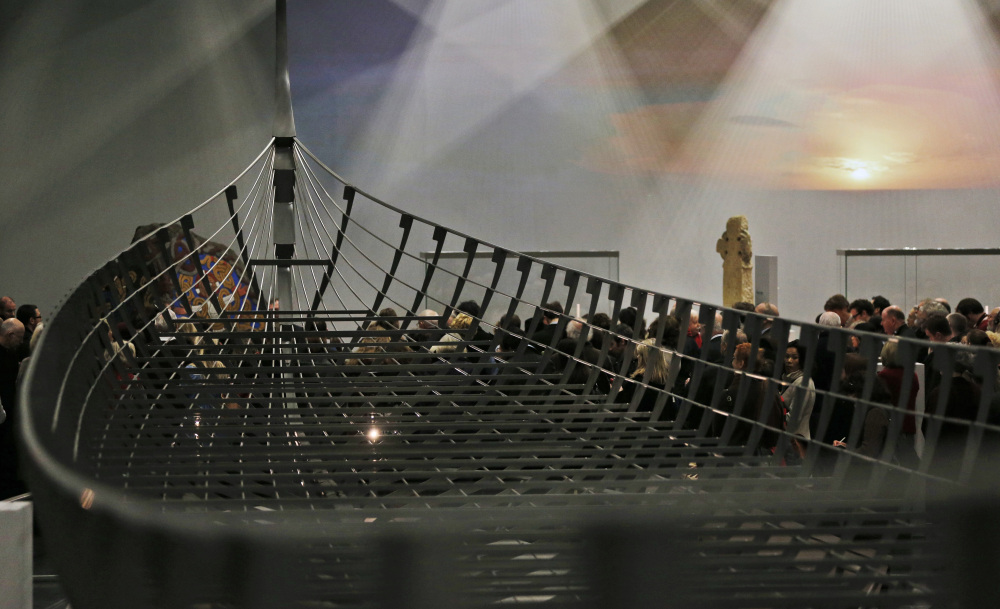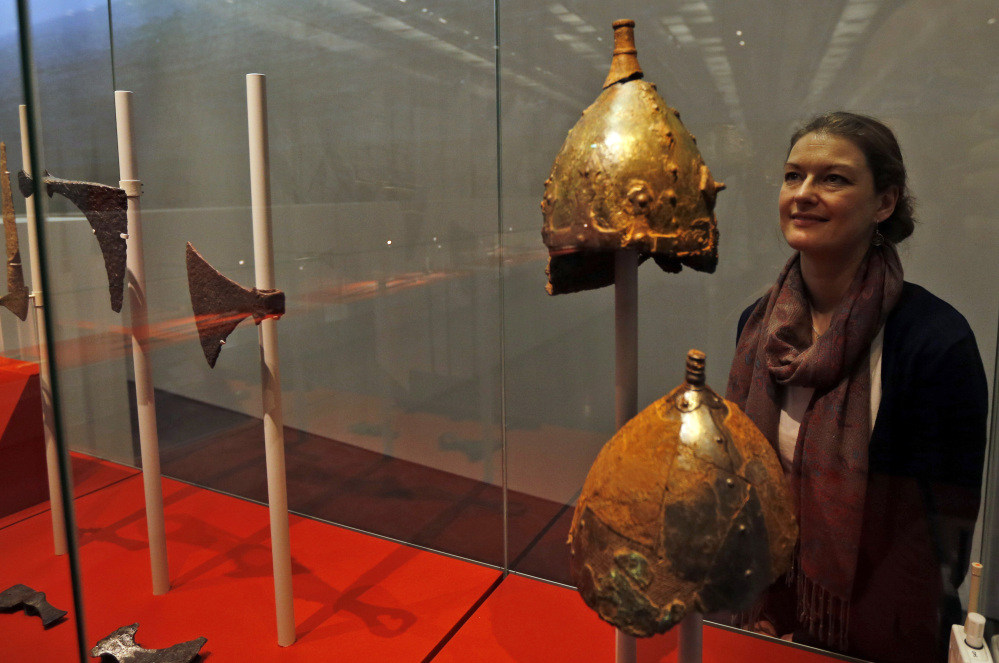LONDON — They had names like Thorfinn Skull-splitter, Erik Bloodaxe and Ragnar Hairy Pants. No wonder the Vikings have a rough and bloody reputation.
A new exhibition at the British Museum strives to make people think again about the Scandinavian pillagers whose name means “pirate” in Old Norse. Through their ships, weapons, crafts, words and even skeletons, “Vikings: Life and Legend” aims to show how Viking energy and ideas redrew the map of the world.
“They were a global phenomenon,” exhibition curator Gareth Williams said of the bearded buccaneers who sailed forth in the 9th century to descend on terrified English monks, Irish villagers and Russian peasants. “They were raiders and they were traders and they were craftsmen and they were explorers.”
Above all, they were sailors and shipbuilders, whose huge longboats, powered by ranks of rowers, took them across the ocean as far west as Newfoundland. To the east, they sailed down the rivers of Russia to the Black Sea and Central Asia.
The Vikings triggered an era of what the exhibition gently calls “cultural interaction” – though it adds that many of those contacts were “bloody and violent.”
Historian Michael Wood said the Vikings spurred a “formative, almost propulsive era” in European history. “Dynastic politics, culture, language, economies – they changed the landscape,” he said.
Seafaring skills take the spotlight in the exhibition, which opens Thursday and runs to June 22. It moves to the Martin-Gropius-Bau museum in Berlin in September.
The most spectacular part of the display is its enormous range of Viking bling, including gold and silver brooches, necklaces and arm bands, some of astonishing size. One braided gold necklace weighs 4.4 pounds.
There is plenty to underscore the Norsemen’s bloodthirsty reputation, from their enormous swords and axes to the startling skull of a Viking warrior, his front teeth filed down and the grooves filled with pigment.
But it also shows the Vikings’ sophistication as explorers, diplomats and traders who dealt in timber, furs and falcons from Scandinavia; whale bone and ivory from the North Atlantic; salt and precious stones from the East.
The Vikings’ terrifying image stands in sharp contrast to the way they saw themselves: as down-to-earth people who valued honor, friendship and good humor above all.
A 1,000-year-old book called the “Havamal,” a trove of Viking folk wisdom, advises that “the best thing in life is to be alive and happy” and says people should leave nothing behind after death but their good names.
Send questions/comments to the editors.




Success. Please wait for the page to reload. If the page does not reload within 5 seconds, please refresh the page.
Enter your email and password to access comments.
Hi, to comment on stories you must . This profile is in addition to your subscription and website login.
Already have a commenting profile? .
Invalid username/password.
Please check your email to confirm and complete your registration.
Only subscribers are eligible to post comments. Please subscribe or login first for digital access. Here’s why.
Use the form below to reset your password. When you've submitted your account email, we will send an email with a reset code.